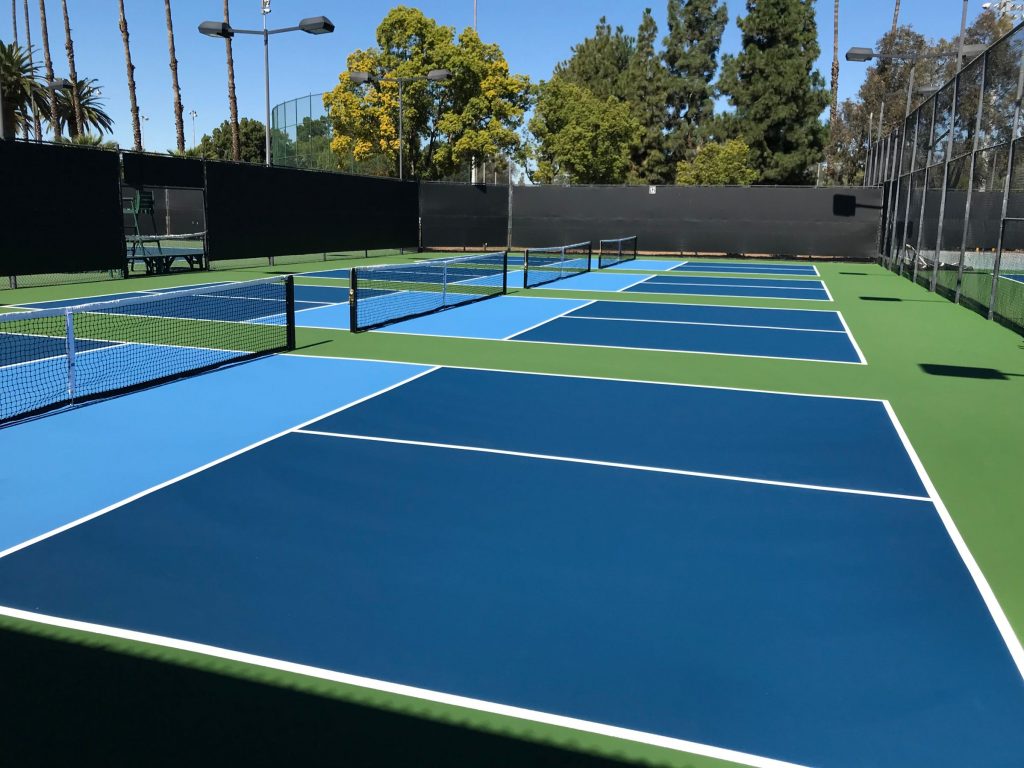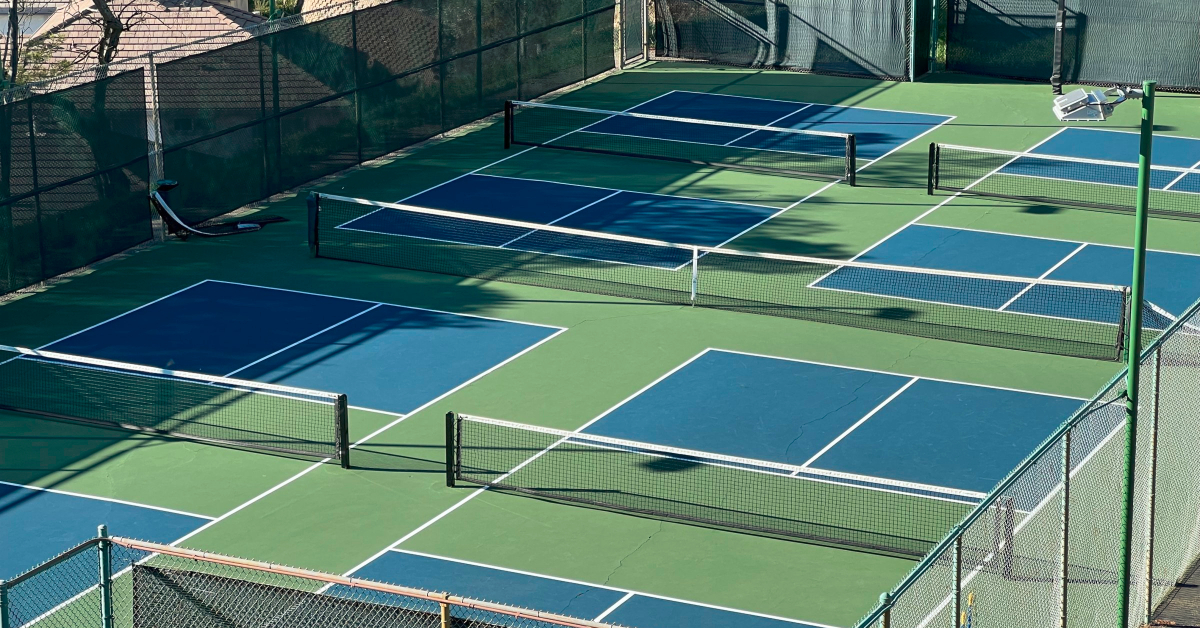Key Factors in the Construction of Pickleball Courts: From Site Option to Last Finishes
The building of pickleball courts includes an array of critical elements, starting with the selection of a suitable website that stabilizes access with environmental considerations. Necessary aspects such as court measurements, surface materials, and drainage systems considerably affect not just the top quality of play yet additionally the longevity of the facility.
Site Choice Requirements
When starting the building of pickleball courts, it is vital to toenail down the website option standards that will certainly make certain optimum playability and access. The area has to be conveniently obtainable for gamers, preferably positioned near residential areas or area facilities, to urge involvement.
Additionally, the terrain ought to be level and stable, as uneven ground can lead to safety and security threats and influence gameplay. Appropriate drain is also crucial; choosing a site with good water drainage will help keep court problems during adverse climate.
One more essential consideration is the accessibility of utilities. Accessibility to electrical energy and water is required for lighting and upkeep purposes. Additionally, distance to auto parking facilities is essential, promoting simple access for gamers and spectators alike.
Ecological elements can not be overlooked; all-natural shade from trees can enhance player convenience, while direct exposure to prevailing winds may disrupt play. Finally, zoning guidelines and neighborhood support need to be considered to make sure that the project straightens with local standards and obtains the backing it requires for successful implementation. By thoroughly reviewing these criteria, stakeholders can produce a welcoming and functional setting for pickleball enthusiasts.
Court Dimensions and Design
To make certain optimal gameplay and adherence to policies, the measurements and format of pickleball courts must be thoroughly specified. A basic pickleball court determines 20 feet in size and 44 feet in size for both songs and increases play. The recommended layout includes a non-volley zone, frequently described as the "cooking area," expanding 7 feet from the net on either side. This location is crucial, as it influences player positioning and shot choice - Illinois and midwest.
The web elevation is established at 36 inches at the sidelines and 34 inches at the facility, developing a mild dip that influences round trajectory. Court markings are equally important; lines should be 2 inches wide and distinct in shade to make certain presence.
Furthermore, a buffer zone surrounding the court is a good idea, normally prolonging 5 to 10 feet beyond the sidelines and baselines to accommodate gamers' motions and improve safety. Correct format and dimensions not only ensure conformity with main policies but additionally boost the total having fun experience, fitting both recreational and affordable play. Cautious planning in these locations is vital to the successful construction of pickleball courts.
Surface Area Product Options
Selecting the right surface area material for pickleball courts is crucial for making certain ideal player efficiency and security. The selection of surface can considerably influence gameplay, see here including round bounce, traction, and gamer comfort.
There are several choices readily available, each with its unique characteristics. Asphalt is a prominent choice because of its resilience and reduced maintenance needs. It offers a strong playing surface area that can endure numerous weather but might call for regular resurfacing.
Concrete is an additional commonly used material, supplying excellent durability and a smooth finish. It enables regular ball bounce however can be tough on players' joints, making it much less preferable for long-term play without appropriate padding.
For those looking for enhanced comfort and shock absorption, supported acrylic surface areas present a feasible choice. These surfaces combine a base layer with an acrylic topcoat, giving improved traction and a softer feel, which is valuable for reducing the danger of injuries.
Finally, artificial lawn is gaining traction, especially for multi-purpose centers. Its convenience and lower upkeep requires make it an appealing alternative, though it might not provide the same sphere action as standard hard courts. Cautious factor address to consider of these alternatives will certainly ensure an ideal playing atmosphere.
Drain and Illumination Considerations
Proper drainage and reliable illumination are vital components in the construction of pickleball courts, considerably influencing both playability and security. Ample water drainage systems avoid water accumulation, which can lead to slippery surfaces and damage to the court framework. A properly designed drainage plan incorporates sloped surfaces and appropriate products to assist in water move far from the playing location - Illinois and midwest. This not just protects the stability of the court but also minimizes downtime as a result of bad weather condition conditions.
Lights is just as crucial, especially for courts planned for night use. The placement of illumination fixtures ought to be purposefully prepared to remove darkness and give even distribution of light across the court.

Last Coatings and Upkeep
After addressing drainage and lighting considerations, interest turns to the final finishes and ongoing maintenance of pickleball courts. Illinois and midwest. The choice of surface material is essential, as it affects both playability and sturdiness. Typical choices include acrylic finishings and specialized sports surfaces that offer optimal traction and padding. These coatings must be used in several layers to guarantee resilience against climate components and put on.

Seasonal upkeep might consist of resurfacing every few years, depending upon use and environmental aspects. Properly keeping webs, court lines, and surrounding locations is just as crucial to provide a safe and enjoyable playing experience. By buying top quality finishes and adhering to an organized maintenance routine, facility proprietors can guarantee their pickleball courts continue to be in outstanding problem for many years to find.
Conclusion
In verdict, the successful building and construction of pickleball courts pivots on careful interest to a number of key aspects. High quality surfaces and a durable maintenance timetable are essential for protecting the court's problem, boosting the general experience for players and viewers alike.